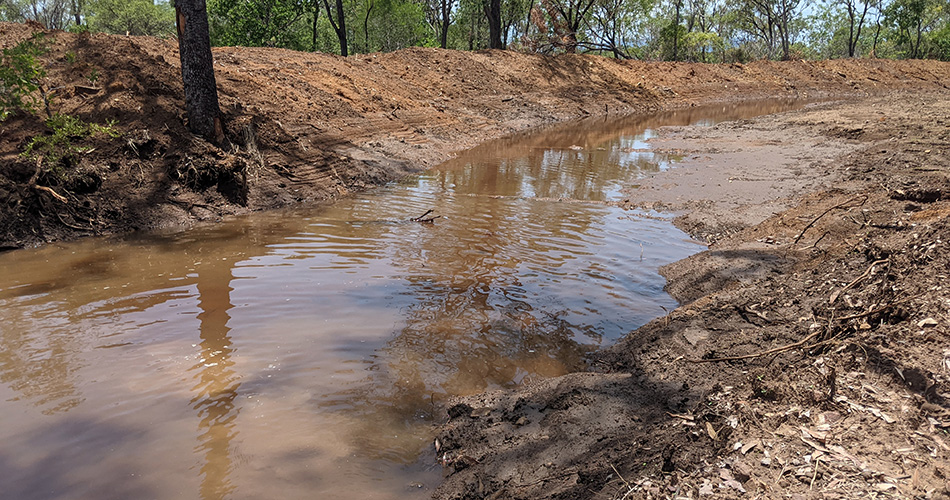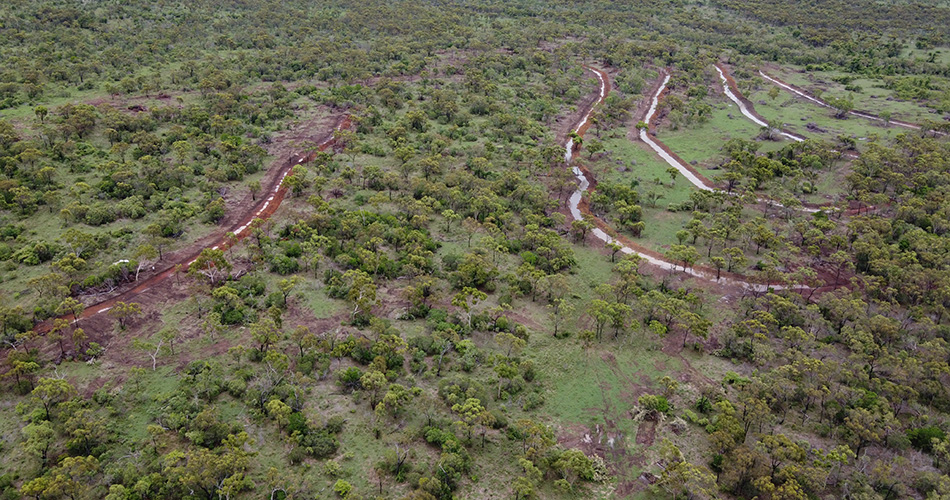Bob got more grass with rotational grazing
LDC project panel member Bob Harris has worked hard over the past 10 years to get more from his land with the right grazing system. We spoke to him about what he has achieved.
Brought up on a dairy in Victoria, Bob always knew he wanted to own his own patch of dirt to grow some grass and cows. But life took him along a few career paths before he found Glencoe, a 2,400ha grazing property south of Bowen.
He purchased the property in 2000 and ran it as a hobby farm until 2010 when he relocated to live on-site and run the business permanently.
Bob said he knew he had to build resilience and drought-proof his property. In the past 10 years he has completed numerous training and education courses and government-funded projects on-property — resulting in improved water quality outcomes as well as boosting farm productivity.

Bob Harris, Glencoe, and Maree Cali, of the Department of Resources.
“There wouldn’t be a day where I don’t reflect on what I have learned from others, industry experts and my peers,” he said.
“Their expertise and views are varied and you need to take heed of that collective wisdom if you’re going to improve your own business.”
That advice led Bob to introduce rotational grazing. He runs 700-plus head, a breeder herd and young store cattle, and 80 per cent of the property has no cattle on it at any given time.
“Plants are grazed in their vegetative state for relatively short periods,” he said.
“I’ve found pasture and soil health has improved because plants are being given longer rest periods to recover from grazing events.
“There’s been an increase in plant biodiversity and water infiltration has also improved.”
Bob believes it’s also important to treat degraded areas on the property. He recently completed a Grazing Resilience and Sustainable Solutions (GRASS) project with NQ Dry Tropics.
The project focused on small-scale landscape remediation measures to improve water management and sediment capture. A series of diversion banks were installed to hold water in the landscape and improve water infiltration instead of running into an adjacent gully system. The remediated area was 30 hectares.
“I had trouble repairing the gully system through grazing management alone,” he said.
“Constructing the diversion banks will allow the land to be repaired and healed, and to increase water infiltration.
“Although we’ve only experienced half a wet season, early indications are positive. Water has been held up but it’ll take a couple of years to see the full extent of the results.”

Recognition for a job well done came along the way. Bob Harris is pictured being presented with a Reef Champion award by Livingstone Shire Council Mayor Bill Ludwig in 2018.
The GRASS project aims to support graziers in priority Great Barrier Reef catchments to improve land conditions and productivity, while helping to protect the reef by reducing soil loss from properties.
It is funded through the Queensland Government’s Reef Water Quality Program and is delivered by the Department of Agriculture and Fisheries, Burnett Mary Regional Group, Fitzroy Basin Association and NQ Dry Tropics.
Watch this video and hear Bob’s story. We’ve put together a series of videos — Stories from the paddock — where landholders tell their story about life on the land. We will be sharing these during the coming months in NQ Dry Tropics’ monthly bulletin PRIME CUTS where you can find all the upcoming events and opportunities for graziers.
Bob Harris and some maiden heifers on Glencoe Station near Bowen.





